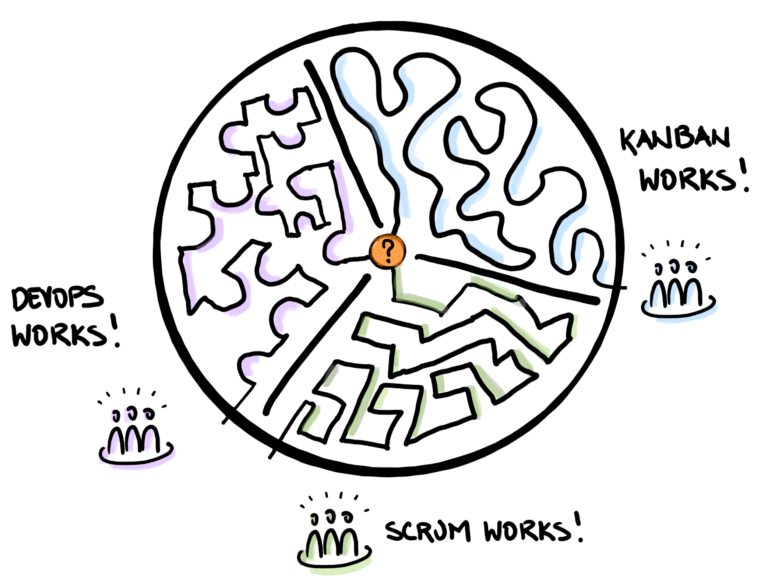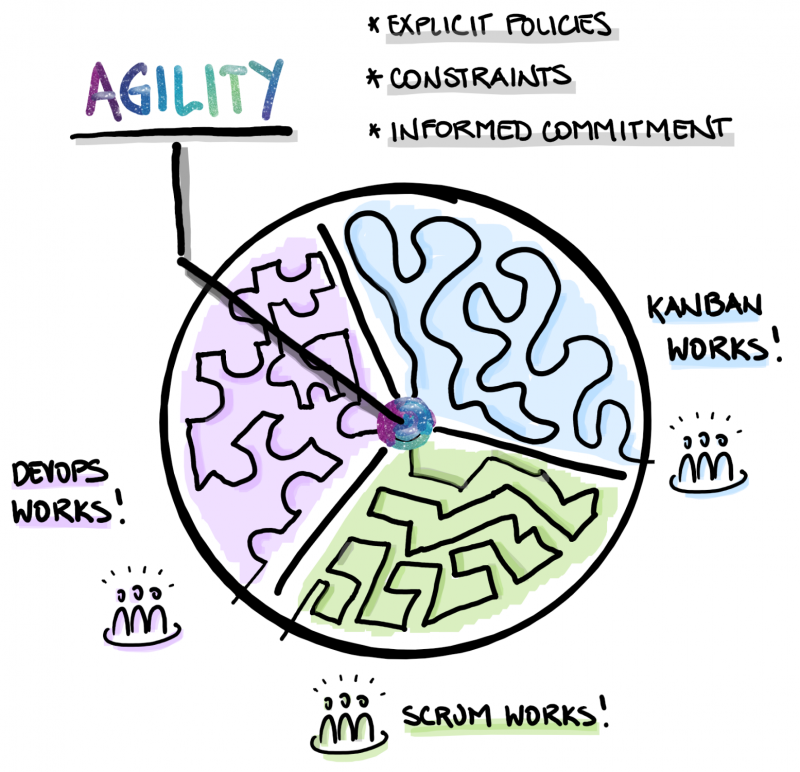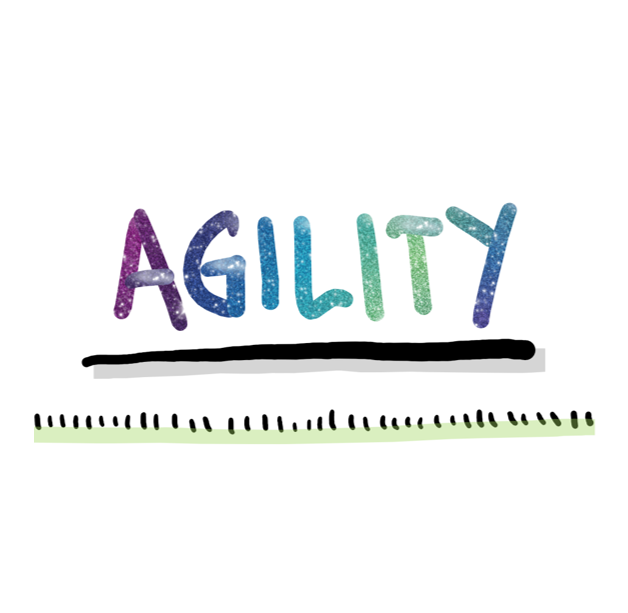Not that long ago, you could hear a lot about the need to go for Modern Agile [1] or how Agile is obsolete or even dead [2].
Similarly, these days you can find many discussions and arguments supporting or contradicting anything ‘scaled’ [3]. Although those discussions are very valuable, perhaps it’s not about right or wrong, or alive or dead.
Maybe we just need a more profound and holistic understanding of that thing (interestingly) called ‘Agile’ [2].

Using Agile Frameworks VS reaching Agility
You may also hear that it is not Agile, but Agility [3,4] that we need. If that idea resonates with you, it might be that the time has come for you to take your ‘Agile’ and evolve it into Agility. Not by inventing something new, but by deeply understanding what makes it tick.
By taking methods and frameworks, shining light backstage, and identifying the dynamics inside. And then we could take those dynamics, arrange them, and present them to aspiring teams/organisations and tell them: “These fundamentals are how (agile) work works.
The framework you follow is ‘just’ a very smart governance. The rules inside it (motions, methods) are there to help you to get to the state of Agility. Confirm with your peers that they do, or that they have the potential to do so. And then go ahead, experience, experiment, and evolve.”
The 3 key ingredients of Agility
On numerous occasions during my coaching activities, I have been asked “How would you describe the ‘team end-goal’ of Kanban, Scrum, or even scaled frameworks if you couldn’t use all those fancy definitions?” I thought to myself “Well then, what is at the core? What do we hope to achieve when implementing agile processes?” Let’s see.

There have been teams that were successful in adopting Scrum, Kanban, DevOps, or many other approaches. Those teams used frameworks and methods that are rather different, and yet, they all led to the same/similar intended and valued outcomes.
What those three agile approaches (and others as well, for that matter) have in common is that they use the same 3 ingredients to reach those outcomes:
- explicit policies
- constraints
- informed commitment
Regardless of the chosen approach, we can always spot those 3 ingredients. Unfortunately, they are not always talked about explicitly and are often just assumed to be there and lost in the ‘implicit’ land.
Pitfalls of Agile Frameworks
Let’s take a peek into that implicit land. For instance, constraints and their benefits can be quite visible in some approaches but not so much in others. However, they’re there, like a thin red line connecting it all.
- In Kanban, we use work in progress limits.
- In Scrum, we apply time boxing and not sharing resources.
- Extreme Programming is very clear about pair allocation and late commitment.
When constraints give you too much pain, it’s mostly because your policies are not explicit enough, or your commitment is not informed (in agreement) enough.
Frictions related to constraints often indicate that we have a deeper/wider issue on our hands.
What successful Agile Teams do differently
Now, back to those successful teams. What is that mysterious place those teams have reached? It is Agility.
- How did they reach it? By being transparent and firm about the three essentials that shape the work.
- By understanding the context and the contradictions that lead to the ‘need’ to go against constraints.
- Finally, by adapting (improving on) those three aspects. Hint: often it is not the presence but the weight of a constraint that needs adjusting.

Doing above mentioned will help you start improving – may it be in delivering value, increasing quality, or overall proving that your team/organisation is fit for purpose.
Don’t forget, it will look differently for each team, even in the same organisation and using the same framework.
Key takeaways for reaching Agility
“Thus, Agile is indeed dead and we need to throw the whole thing away and start over?” you might be asking.
Actually, no. Not at all.
As with any endeavour, it is very useful to know not only the destination but also be aware of the available ways to get there. Agile frameworks (team or scaled) are those possible paths while Agility is your (moving) ‘target’.
Hence, use your chosen agile process but use it wisely – take it and adapt it to suit your company’s industry, size, organisational structure, and needs.
Just make sure you shape it with explicit policies, constraints, and informed commitment in mind. Inspect and adapt through constraints, be aware of your context, and honour your values [5,6]. Then, you will be on the path towards Agility.
‘Do’ and ‘be’ agile at the same time.
Of course, there’s much more to Agility and you can read a lot about it. Yet, in case you have the feeling that your agile framework has brought you mixed outcomes, this might give you an indication regarding how to address the situation.
In case you’d like to uncover more or you just want to discuss, feel free to reach out!
Sources
[1] Modern Agile, by Joshua Kerievsky https://www.industriallogic.com/blog/modern-agile/
[2] Agile is Dead, by Pragmatic Dave Thomas https://www.youtube.com/watch?v=a-BOSpxYJ9M
[3] Why SAFe Is Not The Scaled Agile Approach You Need, by Renee Troughton https://agileforest.com/2018/06/24/why-safe-is-not-the-scaled-agile-approach-you-need/
[4] How did Agile become so unagile (series of 3), by Al Shalloway https://netobjectivesthoughts.com/how-did-agile-become-so-unagile/ https://netobjectivesthoughts.com/step-1-acknowledge-the-need-to-move-from-a-team-focus-to-systems-thinking/ https://netobjectivesthoughts.com/step-2-shift-from-agile-at-the-team-to-business-agility/
[5] The 5 Core Values of Scrum, by Christian Miles https://www.thatsintelligence.com/blog/5-core-values-of-scrum
[6] 12 Principles Behind the Agile Manifesto https://www.agilealliance.org/agile101/12-principles-behind-the-agile-manifesto/


